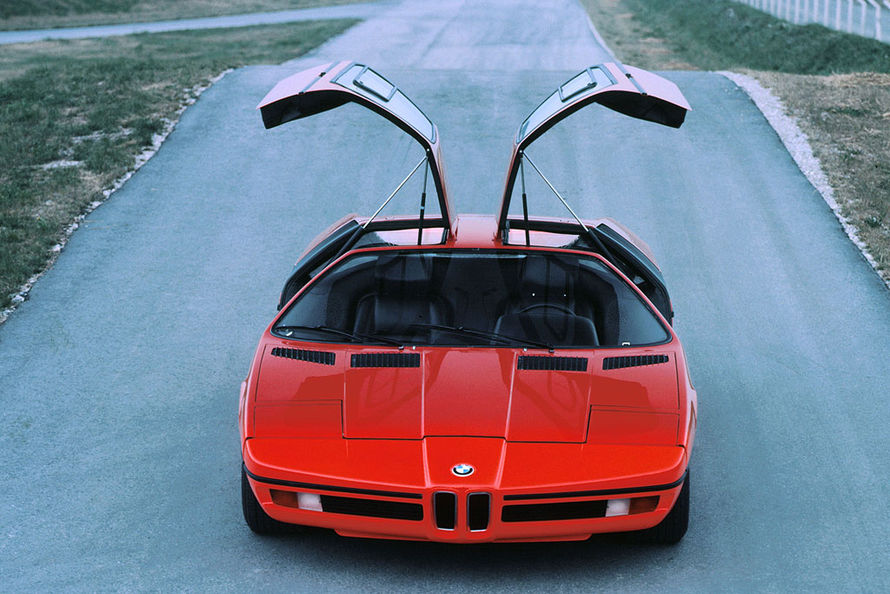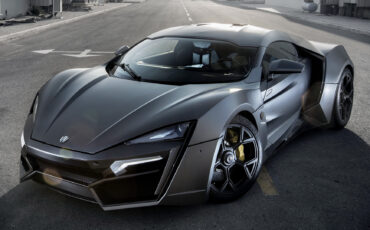
The BMW M1 holds a unique place in automotive history. As the first production car from BMW’s Motorsport division, the M1 was intended to showcase the company’s engineering prowess and racing pedigree. However, despite its striking looks, impressive performance, and significant impact on the BMW brand, the M1’s journey was fraught with challenges, including financial turmoil, production delays, and regulatory hurdles. Today, the M division has evolved into a symbol of high-performance street cars, but the M1’s legacy remains one of both triumph and failure.
The Birth of BMW Motorsport
In 1972, BMW established its Motorsport Division, known as “M,” with the goal of advancing the brand’s competitive edge in the world of motorsports. Prior to this, BMW’s racing efforts were fragmented, with various teams involved in different categories but lacking a unified structure. This all changed when Bob Lutz, BMW’s head of sales and marketing, spearheaded the formation of BMW Motorsport. The division’s primary mission was to build competitive race cars and elevate the brand’s reputation, particularly in touring car racing.

BMW’s first major success in the motorsport arena came in 1973 with the BMW 3.0 CSL, which dominated the European Touring Car Championship. This victory cemented BMW’s position in the racing world. However, as the division grew, it became apparent that creating race cars from existing production models was unsustainable in the long run. The company needed a purpose-built race car, one that would push the boundaries of performance. This vision led to the creation of the BMW M1, a car that would become a defining symbol for BMW Motorsport.
Michelotti and the BMW Turbo Concept
Alongside the creation of the M division, BMW was developing the BMW Turbo, a concept car that would become a landmark in automotive design and technology. Designed by Paul Bracq, the Turbo E25 introduced bold new features, such as a mid-mounted engine, gullwing doors, and retractable headlights, marking a radical departure from BMW’s previous designs. The car represented a vision of the future, combining performance with cutting-edge safety features, and was intended as a technology showcase for the brand.
Initially, BMW contracted Carrozzeria Michelotti, to assemble the Turbo prototype. Giovanni Michelotti, famous for his work with a variety of automotive brands, established a 10,000-square-meter workshop dedicated to the Turbo project. Michelotti built two BMW Turbo prototypes in total, with one being showcased at the 1972 Frankfurt Motor Show. This partnership underscored BMW’s ambition for the car and its desire to create something truly revolutionary.

However, the timing of the project was unfortunate. The 1973 oil crisis caused a global economic downturn, dramatically increasing fuel prices and severely affecting the automotive industry, particularly for performance cars like the BMW Turbo. The crisis placed enormous financial strain on car manufacturers, and BMW was forced to reconsider its plans, including the costly decision to move forward with the Turbo prototype.
The Fallout and the Shift to Italdesign
As the crisis deepened, BMW was unable to fulfill its contract with Michelotti, and the planned collaboration was put on hold. Financial constraints led the company to reevaluate its spending, and resources allocated to the Turbo project were reduced. Michelotti’s specially built workshop, which had been prepared to assemble the car, remained underutilized as BMW shifted its focus.
However, the end of the oil crisis opened up new possibilities. Italdesign, the renowned design and engineering firm led by Giorgetto Giugiaro, came to BMW’s aid. In the years following the crisis, Italdesign purchased Michelotti’s workshop, which would become the production base for the BMW M1. Giugiaro’s expertise in design and engineering played a pivotal role in transforming BMW’s ambitious race car project into a road-going reality.

Giugiaro’s task was to refine the BMW Turbo E25 concept into a production car that could both meet the demands of motorsport and appeal to the consumer market. His design for the M1 retained the sharp, angular lines and futuristic profile of the Turbo, but with refined proportions to suit both racing needs and road-going practicality. The M1’s mid-engine layout, wide stance, and low roofline emphasized its racing pedigree, while its aggressive, sleek design ensured it would stand out as a supercar.
A Race Car for the Road
The BMW M1 was originally conceived as a Group 5 race car, competing against purpose-built machines like the Porsche 935. The project aimed to blend motorsport engineering with production cars, creating a race-bred vehicle that could also be sold to the public. To achieve this, BMW enlisted Lamborghini, to help with the development of the M1. Despite Lamborghini’s expertise in high-performance road cars, it lacked experience in motorsport, which ultimately led to complications during the project.
In the early stages, Lamborghini was tasked with developing the chassis and body of the M1, while BMW would provide the engine. However, Lamborghini’s financial troubles soon became apparent. The company was experiencing significant cash flow issues, and it ultimately misappropriated funds intended for the M1 project. In a dramatic turn of events, BMW was forced to reclaim the project’s components and tooling from Lamborghini, a move that involved a late-night raid to retrieve the M1’s parts. This disruption delayed the project and ultimately led BMW to take full control of the M1’s development.
The Engineering Challenges
Despite the setbacks, the M1 took shape as a highly capable performance car. The vehicle was powered by the M88 engine, a 3.5-liter, straight-six unit that produced 277 horsepower in its road-going form. This engine, derived from the racing program, provided the M1 with impressive performance, allowing it to rival other supercars of the era, such as the Lamborghini Countach and Ferrari 512 BB.

The M1 featured a mid-engine layout, which contributed to its excellent handling characteristics. The car’s design was primarily focused on its racing capabilities, making it relatively raw and unrefined for a road car. It lacked amenities such as power steering, and the cockpit was cramped, with the steering wheel offset to the right to accommodate the center-mounted engine. Despite these compromises, the M1’s performance on the road was outstanding, with acceleration and handling that earned it widespread praise from automotive journalists.
The Racing Struggles and ProCar Series
One of the most significant challenges the M1 faced was its inability to compete in mainstream racing. To homologate the M1 for Group 5 racing, BMW needed to produce 400 road cars. However, production delays meant that only 200 units were built in the first two years, preventing the car from racing in most major events.

In response, BMW created the ProCar Series, a one-make racing championship exclusively for the M1. The ProCar Series was unique in that it featured Formula One drivers competing against privateer M1 owners, creating an exciting spectacle at Formula One race weekends. Although the series generated interest and the M1 proved competitive in this setting, it was not enough to elevate the car into mainstream motorsport. Furthermore, the M1’s performance in ProCar did little to resolve its commercial issues.
Commercial Challenges and Production Woes
The M1 was also a commercial disappointment. Originally, BMW had intended to sell the M1 for around 100,000 Deutsche Marks, placing it in direct competition with supercars like the Lamborghini Countach. However, due to the disruptions caused by Lamborghini’s financial troubles and the increased cost of production, the M1’s price climbed to 113,000 Deutsche Marks. Even with this increase, the car was difficult to sell. BMW was only able to produce 399 M1s, well below the original goal of 1,000 units, making it a rare and expensive model.
Despite its high performance and exotic status, the M1 was a hard sell. Its design was too closely aligned with its racing origins, and its lack of creature comforts and high price point made it less appealing to the typical supercar buyer. Additionally, the car’s raw nature, with its lack of power steering and awkward driving position, alienated many potential customers. In the end, the M1’s commercial failure contributed to its relatively low production numbers and limited legacy as a production car.
Legacy and the Evolution of the M Division
Although the M1 was a commercial and racing disappointment, it laid the foundation for the success of BMW’s Motorsport division. The lessons learned from the M1 project helped shape future BMW M cars, starting with the iconic E30 M3. The E30 M3, developed as a more practical and accessible performance car, became a massive success in both motorsport and sales, marking the beginning of a new era for BMW M.

The M1 also solidified the link between BMW’s racing heritage and its high-performance street cars. Today, the M badge is synonymous with powerful, driver-focused vehicles, but it all traces back to the M1. The M1’s legacy is less about its financial success and more about its role in shaping the identity of BMW M as a division dedicated to performance engineering and motorsport excellence.
Conclusion
The BMW M1’s story is one of ambition, innovation, and hard lessons learned. It was a car ahead of its time, a race car designed for the road, and a symbol of BMW’s commitment to motorsport. While it never reached the commercial success BMW had hoped for, it played a crucial role in the development of the M division and set the stage for future performance cars. The M1 may not have been the financial success BMW wanted, but its influence on the brand and its impact on the automotive world cannot be overstated. Today, the M1 remains a revered classic, a testament to BMW’s racing heritage and the trials and triumphs of the M division.


